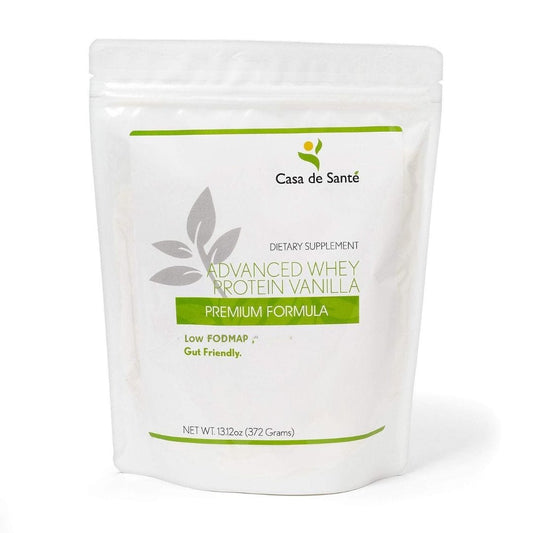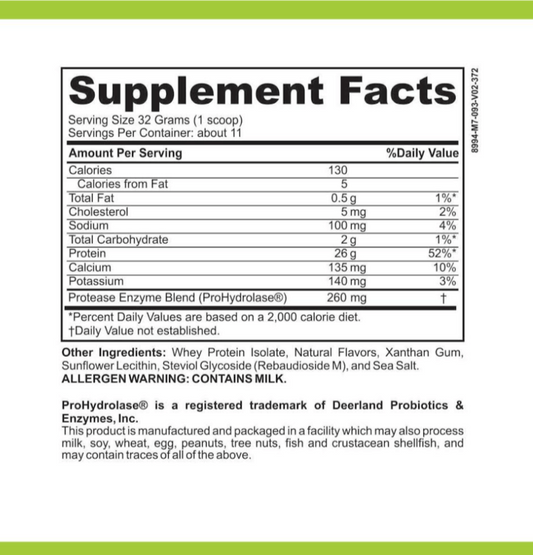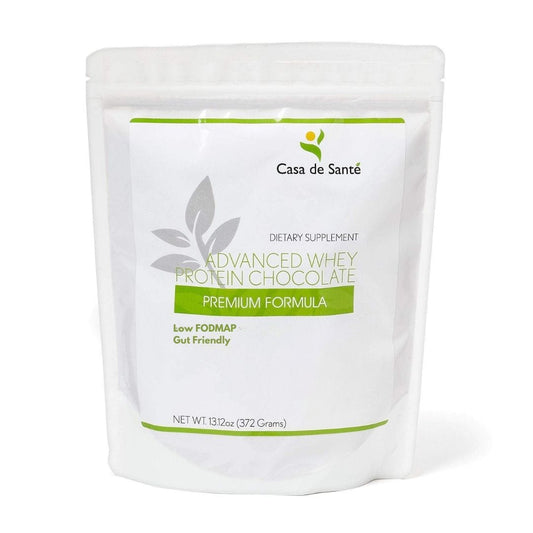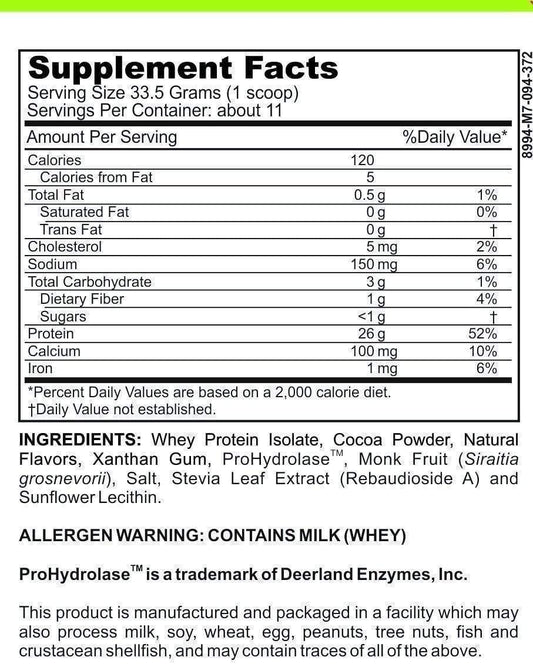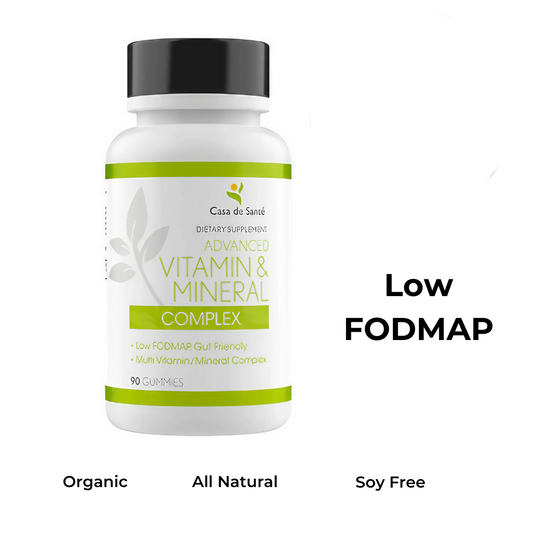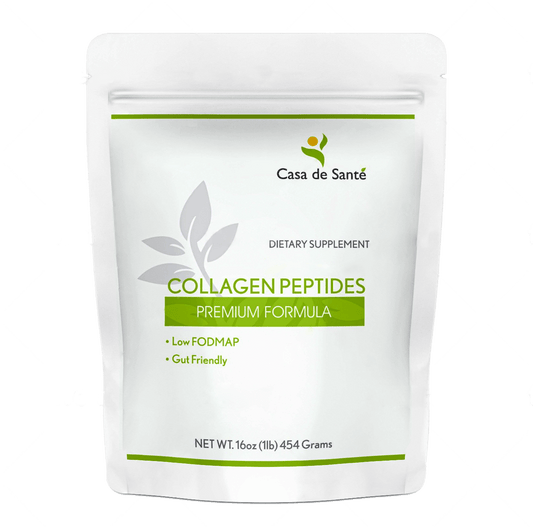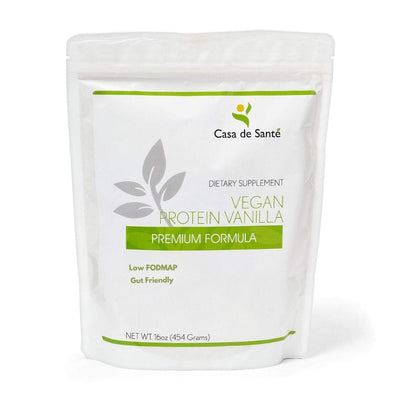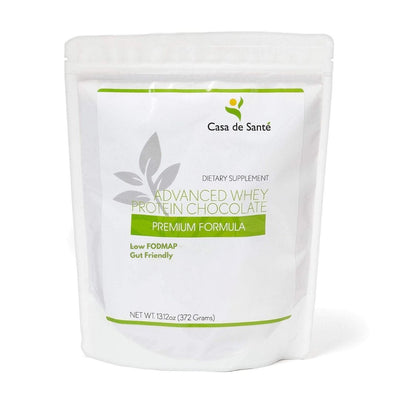Are Smoothies Low FODMAP? A Comprehensive Guide to Informed Choices
Are Smoothies Low FODMAP? A Comprehensive Guide to Informed Choices
Smoothies can be a refreshing and nutritious addition to your diet, but when considering a low FODMAP diet, it's important to choose the right ingredients. A low FODMAP diet is designed to help those who suffer from irritable bowel syndrome (IBS) by reducing the consumption of specific carbohydrates and sugars that can trigger symptoms. So, can smoothies be low FODMAP? The answer is yes, providing you pay close attention to the fruits, vegetables, and other ingredients you're using.
To create a low FODMAP smoothie, focus on incorporating fruits and vegetables that are individually classified as low in FODMAPs. Additionally, be aware of FODMAP stacking – the process of combining various low-FODMAP ingredients that can result in a high FODMAP load. Ultimately, this means taking care not to add too many different fruits and vegetables into one smoothie. By carefully selecting your ingredients and managing portion sizes, you can confidently enjoy a nutritious and IBS-friendly smoothie.
Understanding FODMAPs
What Are FODMAPs?
FODMAPs are short-chain carbohydrates that can be difficult for some people to digest. They are found in various foods and can cause gastrointestinal discomfort, especially for those with irritable bowel syndrome (IBS). FODMAP stands for Fermentable Oligosaccharides, Disaccharides, Monosaccharides, and Polyols. They comprise:
- Oligosaccharides: Examples include fructans and galacto-oligosaccharides (GOS), commonly found in wheat, onions, and legumes.
- Disaccharides: Lactose is the primary disaccharide, found in dairy products like milk and cheese.
- Monosaccharides: Fructose is the primary monosaccharide, found in various fruits, as well as honey and agave syrup.
- Polyols: These sugar alcohols include sorbitol and mannitol, found in some fruits, vegetables, and artificial sweeteners.
The Low FODMAP Diet
The low FODMAP diet is designed to help those with IBS and other functional gastrointestinal disorders by reducing the intake of high FODMAP foods. The diet consists of three stages:
- Elimination: During this phase, you should avoid all high FODMAP foods for two to six weeks, focusing on consuming only low FODMAP options.
- Reintroduction: Gradually reintroduce high FODMAP foods one at a time, carefully monitoring your symptoms to identify which FODMAPs may be causing issues.
- Personalization: Once you've identified your FODMAP triggers, you can create a personalized diet that avoids or limits them, while still enjoying a variety of low FODMAP options.
When considering if a smoothie is low FODMAP, it's essential to look at the ingredients included. Use only low FODMAP fruits and vegetables, being mindful of FODMAP stacking, which refers to combining various low FODMAP ingredients that may, in sum, result in a higher overall FODMAP content. Adjust your recipes accordingly to ensure your smoothies remain low FODMAP and don't cause any discomfort.
Smoothies and the Low FODMAP Diet
Smoothies can be a delightful and refreshing treat for those who follow a low FODMAP diet. By choosing the right ingredients, you can create nutritious and delicious low-FODMAP smoothies to enjoy as a meal replacement, snack, or post-workout replenishment.
To make a low FODMAP smoothie, focus on using low-FODMAP fruits and vegetables. Some examples of low-FODMAP fruits are strawberries, blueberries, and oranges. For low-FODMAP vegetables, you can opt for spinach, kale, or cucumbers. Remember to avoid high-FODMAP ingredients like apples, pears, or avocados.
It's important to be cautious of FODMAP stacking when preparing your smoothie. Mixing various fruits and vegetables may lead to an increased total FODMAP content. To avoid this, limit the portions of each ingredient to ensure they remain within the low-FODMAP guidelines.
For the liquid base of your smoothie, choose almond milk, lactose-free yogurt, or fortified plant-based milks, as they provide a creamy texture while being low in FODMAPs. These options not only contribute to a satisfying smoothie but also offer additional nutrients like protein, calcium, and vitamin D.
Incorporating low-FODMAP smoothies into your diet can be an easy and enjoyable way to boost your overall health while managing your FODMAP intake. By selecting the appropriate ingredients and being mindful of portion sizes, you can indulge in a tasty and nourishing treat without compromising your dietary guidelines.
Ingredients for a Low FODMAP Smoothie
Fruits
While many fruits can be high in FODMAPs, some are considered low FODMAP and safe to include in your smoothie. Stick to the following fruits for a low FODMAP smoothie:
- Strawberries: Rich in vitamins and antioxidants, strawberries add natural sweetness without causing digestive issues.
- Bananas: Include a ripe banana for a creamy texture and potassium boost. Keep the portion size to 1/3 of a medium-sized banana to stay within low FODMAP limits.
- Blueberries: Packed with antioxidants and fiber, blueberries are low FODMAP in small amounts (up to 20 berries).
- Orange: Use a small portion of peeled orange for a burst of vitamin C and natural sweetness.
Remember to avoid excessive amounts of fruit to prevent FODMAP stacking, which could trigger IBS symptoms.
Vegetables
Incorporating low FODMAP vegetables in your smoothie can provide essential nutrients and fiber without upsetting your gut. Consider the following:
- Spinach: Rich in iron, spinach adds a subtle flavor and vibrant color to your smoothie. Feel free to add a handful of fresh or frozen spinach.
- Kale: Packed with vitamins and minerals, a small portion of kale (up to 50g) can supercharge your low FODMAP smoothie.
Proteins
To keep your smoothie satiating and nutrient-dense, include a source of protein. Some options include:
- Yogurt: Opt for lactose-free or low lactose yogurt which will be gentle on your gut.
- Whey protein isolate: Choose a protein powder made from whey protein isolate, which contains less lactose and FODMAPs compared to other protein powders.
- Chia seeds: Add a teaspoon of chia seeds for a boost of plant-based protein and fiber.
Milk Alternatives
To create a creamy and filling smoothie base, consider using the following milk alternatives:
- Almond milk: Low in FODMAPs and a popular choice for plant-based milk.
- Hemp milk: Another low FODMAP option that's rich in essential fatty acids.
- Oat milk: Ensure you're using a certified low FODMAP oat milk, as some brands may contain high FODMAP ingredients.
Add-Ins
Elevate the flavor and nutritional value of your low FODMAP smoothie with these add-ins:
- Cinnamon: A delightful spice that adds warmth and natural sweetness.
- Ginger: Fresh or ground ginger can help alleviate digestive discomfort and adds zing to your smoothie.
- Flaxseeds: Add a teaspoon of ground flaxseeds for extra fiber and a nutty flavor.
- Honey: A low FODMAP sweetener, use small amounts (1-2 teaspoons) for a touch of sweetness.
With these ingredients in mind, you can create a variety of delicious and satisfying low FODMAP smoothies. Just remember to monitor portion sizes and FODMAP stacking to maintain a balanced and gut-friendly beverage.
Nutritional Benefits of Low FODMAP Smoothies
Low FODMAP smoothies can provide you with numerous health benefits, making them a great addition to your diet. These smoothies contain a variety of fruits and vegetables that are low in fermentable oligosaccharides, disaccharides, monosaccharides, and polyols, promoting gut health and easing symptoms in individuals with irritable bowel syndrome (IBS).
Fiber: Low FODMAP smoothies can be a good source of fiber, which helps in maintaining healthy digestion and preventing constipation. Incorporating ingredients like chia seeds or flaxseeds can further boost the fiber content.
Energy: These smoothies provide a steady source of energy, thanks to the low FODMAP ingredients that are easier for your body to digest and absorb. This can help in preventing energy crashes, which makes them perfect for sustaining you throughout the day or as a post-workout snack.
Green Smoothies: By incorporating low FODMAP leafy greens like spinach or kale into your smoothies, you can benefit from the high levels of vitamin K, calcium, zinc, magnesium, and more, which contribute to overall health and wellness.
Vitamin C: Ingredients such as strawberries, pineapple, and kiwi are packed with vitamin C, which acts as an antioxidant, supports immune function, and promotes healthy skin.
Digestive Health: The low FODMAP ingredients in these smoothies are gentler on your digestive system, making them ideal for individuals who suffer from IBS or other digestive issues.
Cardiovascular Health: Some low FODMAP fruits and vegetables, like blueberries and spinach, contain powerful antioxidants that can help support cardiovascular health by reducing inflammation and protecting against heart disease.
Healthy Fats: By incorporating avocados or nut butters made from almonds or peanuts, you can add healthy fats to your smoothies, which aid in nutrient absorption, improve brain function, and provide sustained energy.
Bromelain: Pineapple is a natural source of bromelain, an enzyme with anti-inflammatory properties that can help support digestion and reduce symptoms of IBS.
Nutritional Punch: A well-balanced low FODMAP smoothie can pack a nutritional punch, providing you with a variety of vitamins, minerals, and antioxidants that your body needs to stay healthy.
Probiotics: To further support gut health, consider adding a low FODMAP, high-quality probiotic yogurt to your smoothie. This will not only provide a creamy texture but also introduce beneficial bacteria to your gut, promoting a healthy balance in your digestive system.
Digestive Health and Low FODMAP Smoothies
If you suffer from irritable bowel syndrome (IBS), incorporating low FODMAP smoothies into your diet may be beneficial. IBS is a common gastrointestinal disorder that causes symptoms such as abdominal pain, bloating, gas, diarrhea, and constipation. By focusing on low FODMAP ingredients, these smoothies may help alleviate some of these uncomfortable symptoms.
Low FODMAP fruits and vegetables are key components in crafting smoothies that are more gentle on your digestive system. FODMAPs are short-chain carbohydrates that can be poorly absorbed in the small intestine, which can lead to gas production and other digestive problems in IBS sufferers. By using low FODMAP ingredients, such as strawberries, blueberries, and spinach, you can create smoothies that are not only delicious but also beneficial for your gut health.
When making a low-FODMAP smoothie, it is essential to be mindful of lactose. IBS sufferers may experience increased gas and bloating when consuming lactose-containing ingredients. Opting for lactose-free alternatives, such as almond milk or lactose-free yogurt, can help ensure that your smoothie is both tasty and gut-friendly. Additionally, these ingredients provide essential nutrients like calcium and vitamin D, as well as probiotics, which are beneficial for gut bacteria balance.
Lastly, one important aspect to consider when crafting low FODMAP smoothies is the concept of FODMAP stacking. This occurs when small portions of low FODMAP ingredients are combined to create a high FODMAP volume, potentially triggering IBS symptoms. To avoid this, be cautious about the quantities of each ingredient you include in your smoothie and ensure that the overall FODMAP content remains low.
Incorporating low FODMAP smoothies into your diet can help promote digestive health and alleviate IBS symptoms. By using low FODMAP fruits and vegetables, lactose-free alternatives, and being mindful of FODMAP stacking, you can enjoy a tasty and gut-friendly beverage.
Putting Together a Low FODMAP Smoothie
Balancing Ingredients For Your Needs
When creating a low FODMAP smoothie, it's essential to choose the right ingredients to meet your dietary needs. Start by selecting low FODMAP fruits such as honeydew and papaya, as they have a lower likelihood of triggering IBS symptoms. Additionally, opt for low FODMAP vegetables like kale or spinach if you're looking to create a green smoothie.
For your liquid base, consider almond milk, coconut milk, or rice milk, as they tend to be lower in FODMAPs. If you prefer a dairy option, lactose-free milk can be a suitable choice.
To boost the nutritional content of your smoothie, you can add low FODMAP protein powder. Just be sure to check the label to ensure it's free of high FODMAP additives and sweeteners.
Low FODMAP Smoothie Recipes
Here are a few simple low FODMAP smoothie recipes to get you started:
-
Honeydew & Mint Smoothie
- 1 cup chopped honeydew melon
- 1/4 cup fresh mint leaves
- 1 cup almond milk
- 1 tablespoon chia seeds
- 1/2 cup ice
- Blend all ingredients until smooth and enjoy!
-
Papaya & Coconut Milk Smoothie
- 1 cup chopped papaya
- 1 cup coconut milk
- 1/2 cup ice
- 1 tablespoon shredded unsweetened coconut (optional)
- Blend all ingredients until smooth and enjoy!
-
Green Smoothie
- 1 cup spinach or kale
- 1/2 cup chopped honeydew melon
- 1/2 cup chopped pineapple
- 1 cup rice milk
- 1 scoop low FODMAP protein powder (optional)
- Blend all ingredients until smooth and enjoy!
Remember to keep your portion sizes in check and monitor your body's response to these recipes. Adjust the ingredients as needed to suit your personal needs and preferences.
Additional Resources
Consulting with a Nutritionist or Doctor
When considering a low FODMAP diet, it is essential to consult with a nutritionist or doctor. They can help you identify your specific dietary needs and guide you on which foods to include or avoid.
Incorporating smoothies into a low FODMAP diet requires selecting the appropriate ingredients. Some key factors to consider include using low FODMAP fruits and vegetables, controlling portion sizes, and avoiding high FODMAP fruits or FODMAP stacking. Low-fat or fat-free dairy milk, unsweetened yogurt, or fortified plant-based milks can make smoothies more balanced and provide essential nutrients like protein, calcium, and vitamin D.
Consider the following when creating low FODMAP smoothies:
- Use low FODMAP fruits, such as strawberries, blueberries, and oranges for their sweetness and vitamin C.
- Organic sugar-free options for sweeter smoothies without added sugars or high FODMAP carbohydrates.
- Incorporate baby spinach for a boost of fiber and nutrients without adding noticeable flavor.
- Monitor any reactions to different ingredients and share your findings with your nutritionist or doctor.
Monash University Research
Monash University has conducted extensive research on the low FODMAP diet and its impact on individuals with irritable bowel syndrome (IBS). They have developed guidelines and an app to assist in identifying low FODMAP foods and appropriate serving sizes. Utilizing this resource can be very helpful when creating low FODMAP smoothies and maintaining a balanced diet.
To stay updated on the latest research and findings from Monash University, consider regularly checking their website or app. This ensures that you have access to up-to-date, reliable information on incorporating smoothies and other foods into your low FODMAP diet.
Remember, while smoothies can be a healthy and convenient option, it is crucial to use low FODMAP ingredients and pay attention to portion sizes. Consult with a nutritionist or doctor to tailor your diet to your specific needs, and use evidence-based resources like Monash University's guidelines to create nourishing, low FODMAP smoothies.







